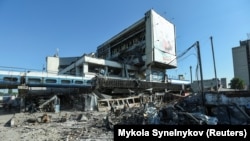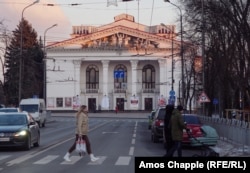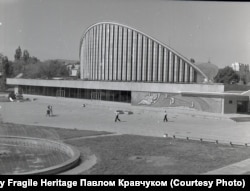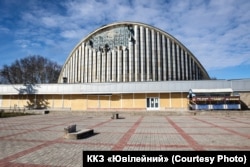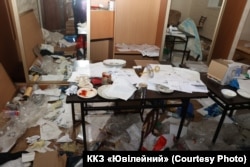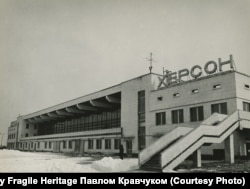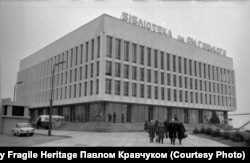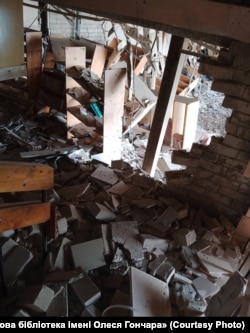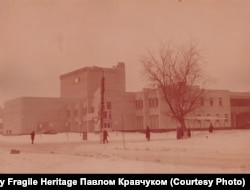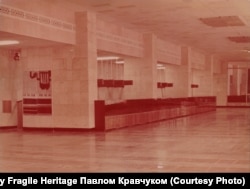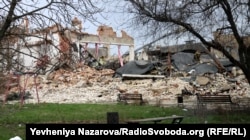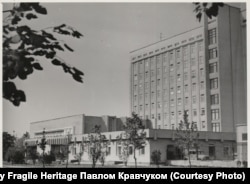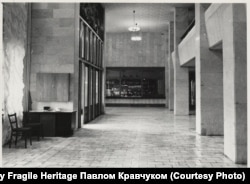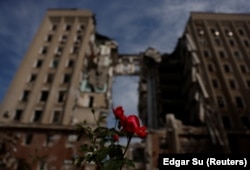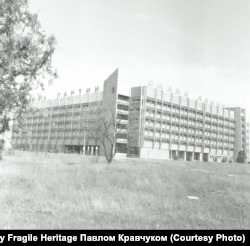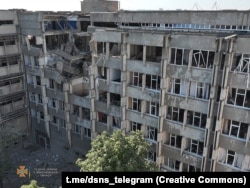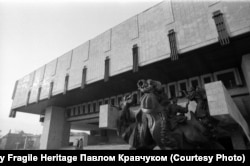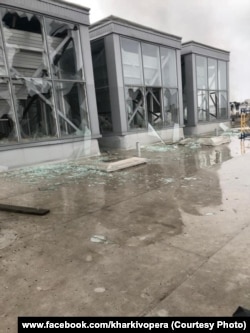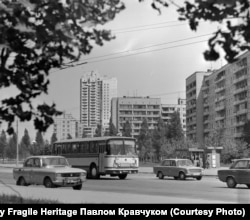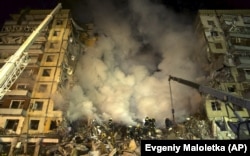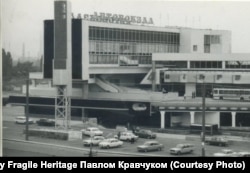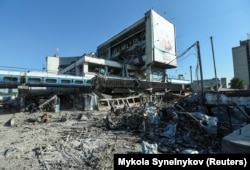Despite official denials by the Russian government, Ukraine's government buildings, hospitals, and schools have been targeted and in many instances destroyed by drones, missiles, and air strikes. Modernist architectural landmarks from the second half of the 20th century have also been the target of these attacks. To document the nation's architectural losses, concerned architects and historians have come together under the Fragile Heritage project.
The project is aimed at future restoration efforts and hopes to play a vital role in the successful reintegration of Ukraine's liberated territories.
"The goal of our project is for us to learn to talk about the heritage of temporarily occupied territories and territories that are under the greatest threat of Russian shelling," Zaporizhzhya historian Pavlo Kravchuk notes. "Why do we need to talk about heritage? Because sooner or later there will be [liberation of occupied territory], and we have to accept the historically formed space -- not the space of an enemy culture, but the space that was formed within the framework of Ukraine. And this space is not something that is subject to change immediately or improve, but a space in which there are valuable objects."
Kravchuk adds: "When we do not understand that there are certain important spatial markers of local identity, not only political but also spatial, it will be very difficult for us to carry out the process of reintegration. And we need to talk about this legacy now."
Mariupol
Before Russia's full-scale invasion of Ukraine in February 2022, the Mariupol Drama Theater, built in the 1950s-60s in the style of Soviet monumental classicism, served as the heart of the city, bringing together its residents and artistic community. However, on March 16 of that year, it was tragically transformed into a mass grave following a targeted attack by Russia.
The theater is now enclosed in fencing etched with Russian and Ukrainian literary figures, as well as an outline of the theater's previous life before the Russian attack.
Kherson
An example of Soviet modernism, the Jubilee Cinema and Concert Hall in Kherson is characterized by grand, monumental structures intended to convey a sense of strength and permanence. Construction began in 1960 and concluded in 1963.
The concert hall was struck by Russian shelling on February 12, damaging the aluminum panels on the building's exterior.
During the Russian occupation of Kherson, Russian-backed authorities set up a humanitarian aid distribution point on the premises of the Jubilee and later looted it as they retreated.
Another architectural highlight in the city was Kherson airport. Built during the Soviet-era in the modernist style, it opened in the 1960s as a regional transport hub.
Kherson airport was shelled on the first day of the full-scale invasion of Ukraine by Russian forces. Later, the area was occupied by Russian troops and used for military purposes.
The Armed Forces of Ukraine also shelled the area when Russian forces were occupying it.
The Kherson Regional Universal Scientific Library, designed in the neoclassical architectural style, was named for prominent Ukrainian writer and public figure Oles Gonchar.
During the occupation of Kherson, the library was pillaged when Russian occupation authorities took away the collection of pre-revolutionary publications stored in the institution.
The library has repeatedly come under missile attack.
Zaporizhzhya
Built in 1986, the House of Culture can best be described as Soviet modernism or Soviet brutalism -- a common style for public buildings during the Soviet-era.
Soviet modernism often featured a combination of modernist and functionalist elements that emphasize functionality and simplicity. Soviet brutalism is well known for its use of raw concrete and imposing, monumental structures that convey a sense of solidarity and simplicity.
On November 6, 2022, the cultural building was destroyed in a missile attack.
Mykolayiv
The Mykolayivska OVA building is also known as the Mykolayiv Regional State Administration headquarters.
On March 29, 2022, Russian forces carried out a missile strike on the Mykolayiv Regional State Administration's headquarters. In addition to the destruction of the building, at least 37 deaths and 34 injuries were reported.
The Admiral Makarov National University of Shipbuilding has a storied history dating back to its founding in 1899. It was initially established as a school to train specialists for the Russian Imperial Navy, playing a significant role in the development of shipbuilding and naval engineering. During the Soviet era, the campus expanded with modernist buildings, and in 1971 the newly constructed building (pictured above) was opened.
Since the full-scale invasion began, the university has been repeatedly attacked by Russian forces, suffering severe damage.
Kharkiv
The Kharkiv National Academic Opera and Ballet Theater, also known as the Kharkiv Opera House, has a rich history dating back to the 19th century. Named after Mykola Lysenko, construction began on the new postmodern theater, which featured tufa tiles, in 1990.
The theater was reportedly heavily damaged in March 2022. This spring, musicians performed a concert there for the first time since the Russian invasion. Nevertheless, the ongoing conflict has led to a ban on hosting large events in cultural and educational institutions throughout Kharkiv.
Dnipro
When the large Peremoha, also known as the Victory housing estate, was built in the 1970s, it was an example of Soviet-era urban regeneration. Designed for members of the professional class, it was considered a prestigious micro-district for those who lived there.
On January 14, Russian troops launched a massive missile attack on the city of Dnipro. The Peremoha residential neighborhood was also struck, resulting in the deaths of 45 people, including five children, and 79 injuries.
The Dnipro bus station, also known as Dnipro Avtovokzal, had undergone renovations and expansions over the years, serving as a vital part of Dnipro's infrastructure.
On August 24, 2023, the Russian military launched a devastating missile attack that struck the bus station and destroyed many nearby shops.




